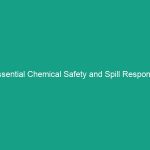Unlock Your Potential: What is Your “Why” in Health and Safety?
Introduction
Good morning team,
Today, we are diving into a crucial topic that can profoundly affect our workplace Environment: understanding our “why” in health and Safety. This Toolbox Talk aims to illuminate the driving forces behind our commitment to safety and how it can enhance our daily operations. By recognizing the *why*, we can not only comply with Regulations but also foster a culture where safety is prioritized and valued.
Understanding our motivations can significantly improve our approach to safety practices. So, let’s explore why this is essential for both individual and collective well-being.
Understanding Your “Why” in Health and Safety
Your “why” in health and safety refers to the underlying reasons that motivate you to engage in Safe Practices. It can stem from personal experiences, a desire to protect your colleagues, or a commitment to creating a safer workplace.
Recognizing this motivation is vital because it influences your behavior and decisions regarding safety. For instance, if your “why” is rooted in personal experiences, you may be more vigilant about following safety protocols.
Many employees may mistakenly believe that Safety Measures are merely a checklist to fulfill compliance requirements. However, understanding your “why” transforms safety from a task into a shared value and responsibility.
Key Hazards, Risks, and Safety Considerations
Identifying Hazards and risks is an essential step in making safety a priority. Common hazards in the workplace include:
- Slips, Trips, and Falls: These are often caused by wet floors, clutter, or uneven surfaces.
- Equipment Hazards: Improper use or Maintenance of machinery can lead to serious injuries.
- Chemical Exposure: Handling hazardous substances without proper protection can pose significant health risks.
Ignoring these hazards can lead to severe consequences, including injuries, long-term health issues, or even fatalities. By understanding your “why,” you can recognize the importance of adhering to safety protocols to prevent these incidents.
Best Practices, Procedures, & Actionable Advice
To ensure a safe workplace, it is crucial to adopt Best Practices effectively. Here are some actionable steps you can implement:
- Conduct Regular Safety Training: Stay updated with safety practices and regulations through regular training sessions.
- Utilize Personal Protective Equipment (PPE): Always wear appropriate PPE for your role, whether it’s helmets, gloves, or goggles.
- Report Hazards Immediately: If you notice a hazard, report it to your supervisor right away to prevent accidents.
- Participate in Safety Meetings: Engage in discussions about safety protocols and share your thoughts on improvements.
Let’s consider a case study: At a construction site, a worker noticed loose scaffolding but hesitated to report it. A few days later, a colleague suffered a fall due to that very hazard. This incident underscores the importance of being proactive and recognizing that our safety practices can significantly impact our teammates.
Regulations, Standards, and Compliance
Understanding the legal aspects of Workplace Safety is essential. Compliance with OSHA (Occupational Safety and Health Administration) standards, for example, is not just a legal requirement but a moral obligation to protect each other.
Failing to adhere to these regulations can lead to severe penalties for the company and jeopardize employee safety. By knowing the regulations applicable to your role, you can take proactive measures to ensure compliance and create a safer work environment.
Employee Engagement & Discussion
Let’s engage in a discussion about our “whys.” Here are a few open-ended questions for you to think about:
- What personal experiences have shaped your views on Workplace Safety?
- Can you share a moment when you witnessed a safety practice that made a difference?
- What safety challenges have you encountered related to our daily operations?
Feel free to share your thoughts with the group. Engaging in these discussions can help us learn from one another and reinforce our commitment to safety.
Conclusion & Key Takeaways
In conclusion, understanding your “why” in health and safety is pivotal for fostering a culture of safety in the workplace. By recognizing what motivates us, we can become more proactive in our safety practices, ensuring a healthier work environment for everyone.
Remember the key points we discussed today:
- Define your personal “why” and let it guide your safety practices.
- Identify hazards and take immediate action to mitigate risks.
- Engage in regular safety training and discussions to stay informed and involved.
Thank you for your attention and commitment to making our workplace safe. Let’s all prioritize safety and support each other in unlocking our potential!


